The electric vehicle market is evolving rapidly, and two of the frontrunners — Volkswagen with its ID.5 and Tesla's Model Y — are making headlines. Both models bring unique strengths to the table, appealing to different segments of electric vehicle buyers. Let’s dive deeper into a comparative analysis of these two SUVs to uncover their technical aspects and innovations.
VW ID.5 vs Tesla Model Y – Performance, range & efficiency compared
Compare performance, boot capacity, efficiency and price at a glance.
Find out which car is the better choice for you – VW ID.5 or Tesla Model Y?
Design and Dimensions
The VW ID.5 is a stylish compact SUV that measures 4599 mm in length, 1852 mm in width, and 1618 mm in height. With a cargo space of 549 liters, it provides a ample capacity for daily errands or weekend getaways.
On the other hand, the Tesla Model Y is slightly larger, measuring 4751 mm in length, 1921 mm in width, and standing 1624 mm tall. What stands out is its trunk capacity – offering 854 liters, it provides superior storage options. Both vehicles sport a sleek, futuristic design but differ in their overall proportions and utility.
Performance and Powertrain
Performance-wise, the ID.5 offers a range of options with power outputs of 170 HP to a robust 340 HP. It accelerates from 0-100 km/h in as little as 5.4 seconds, depending on the variant. The ID.5's torque tops out at a powerful 679 Nm, providing thrilling performance for an electric SUV.
Contrastingly, the Tesla Model Y boasts a power range from 299 HP up to an incredible 514 HP, with the high-performance variant hitting 0-100 km/h in just 3.7 seconds. Its torque can reach up to 660 Nm, ensuring exhilarating acceleration and top-tier efficiency. Both vehicles are equipped with an automatic transmission featuring a reduction gearbox, which enhances smoothness and energy efficiency.
Electric Range and Efficiency
In terms of electric range, the ID.5 impressively achieves up to 563 km on a single charge, with consumption figures ranging from 15.6 kWh/100 km to 16.6 kWh/100 km. The battery options available — 52 kWh, 77 kWh, and 79 kWh — cater to varying needs for daily commutes or long journeys.
Meanwhile, the Model Y offers a slightly lower maximum range of 600 km, with a more efficient consumption rate peaking at 14.9 kWh/100 km. It also has battery capacities of 62 kWh and 79 kWh, catering to users seeking performance without sacrificing range. Both models have zero CO2 emissions, contributing to eco-friendliness.
Interior Comfort and Technology
Both the VW ID.5 and Tesla Model Y offer spacious interiors designed for comfort. The ID.5 features high-quality materials and an intuitive infotainment system complete with a large touchscreen interface. It seats five passengers comfortably and boasts practical storage compartments.
The Tesla Model Y takes interior innovation a step further with its minimalistic design and expansive panoramic glass roof that offers a unique airy feel. Additionally, it provides an optional seven-seat configuration, making it more adaptable for larger families. The advanced autopilot capabilities and superior software integration showcase Tesla's cutting-edge technology within the Model Y.
Conclusion: Choosing the Right SUV
Ultimately, the choice between the VW ID.5 and the Tesla Model Y boils down to personal preference and needs. The ID.5 is an appealing option for those who appreciate a stylish design and efficient electric range, while the Model Y stands out in terms of performance, technology, and versatility.
As electric vehicles become the norm, both Volkswagen and Tesla are committed to innovation in this space, making the decision even more challenging for potential buyers. Each vehicle brings forth a unique experience, ensuring that there’s an electric SUV perfect for everyone.
Here’s where it gets real: The technical differences in detail
Costs and Efficiency:
Looking at overall running costs, both models reveal some interesting differences in everyday economy.
Tesla Model Y has a barely noticeable advantage in terms of price – it starts at 34300 £, while the VW ID.5 costs 36800 £. That’s a price difference of around 2554 £.
In terms of energy consumption, the advantage goes to the Tesla Model Y: with 13.10 kWh per 100 km, it’s a bit more efficient than the VW ID.5 with 15.70 kWh. That’s a difference of about 2.60 kWh.
As for range, the Tesla Model Y performs slightly better – achieving up to 622 km, about 63 km more than the VW ID.5.
Engine and Performance:
Under the bonnet, it becomes clear which model is tuned for sportiness and which one takes the lead when you hit the accelerator.
When it comes to engine power, the Tesla Model Y has a convincingly edge – offering 627 HP compared to 340 HP. That’s roughly 287 HP more horsepower.
In acceleration from 0 to 100 km/h, the Tesla Model Y is significantly quicker – completing the sprint in 3.50 s, while the VW ID.5 takes 5.40 s. That’s about 1.90 s faster.
In terms of top speed, the Tesla Model Y performs distinct better – reaching 250 km/h, while the VW ID.5 tops out at 180 km/h. The difference is around 70 km/h.
There’s also a difference in torque: VW ID.5 pulls noticeable stronger with 679 Nm compared to 493 Nm. That’s about 186 Nm difference.
Space and Everyday Use:
Cabin size, boot volume and payload all play a role in everyday practicality. Here, comfort and flexibility make the difference.
Both vehicles offer seating for 5 people.
In curb weight, VW ID.5 is minimal lighter – 1963 kg compared to 1976 kg. The difference is around 13 kg.
In terms of boot space, the Tesla Model Y offers noticeable more room – 822 L compared to 549 L. That’s a difference of about 273 L.
In maximum load capacity, the Tesla Model Y performs noticeable better – up to 2138 L, which is about 577 L more than the VW ID.5.
When it comes to payload, VW ID.5 a bit takes the win – 549 kg compared to 472 kg. That’s a difference of about 77 kg.
Who wins the race?
The Tesla Model Y proves to be wins the duel decisively and therefore becomes our DriveDuel Champion!
Tesla Model Y is the better all-rounder in this comparison.
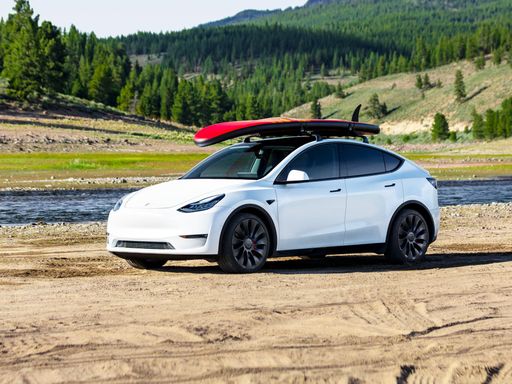 @ Tesla, Inc.
@ Tesla, Inc.
Tesla Model Y
VW ID.5
The VW ID.5 is a stylish all-electric coupé SUV, designed to combine the practicality of an SUV with the sleek aesthetics of a coupé. Inside, the cabin offers a modern and spacious environment, featuring advanced technology that provides a seamless and intuitive driving experience. The ID.5 stands out with its dynamic performance and sustainable design, making it an attractive option for eco-conscious drivers.
details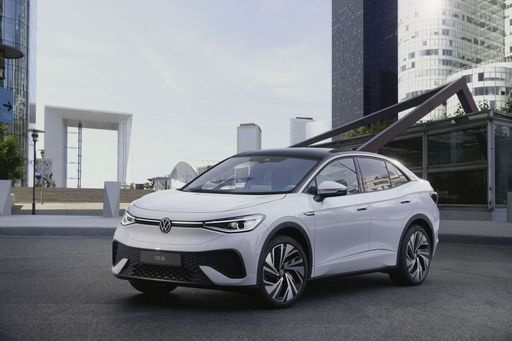 @ Volkswagen AG / VW Media
@ Volkswagen AG / VW Media
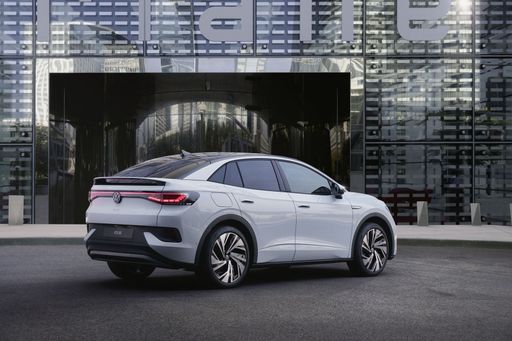 @ Volkswagen AG / VW Media
@ Volkswagen AG / VW Media
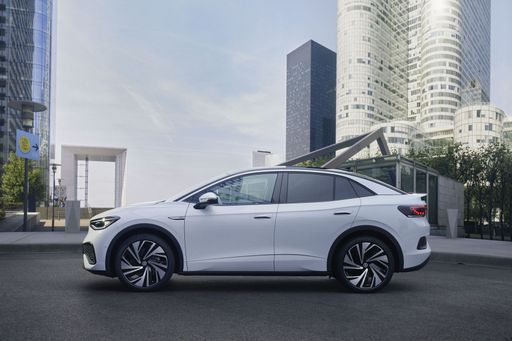 @ Volkswagen AG / VW Media
@ Volkswagen AG / VW Media
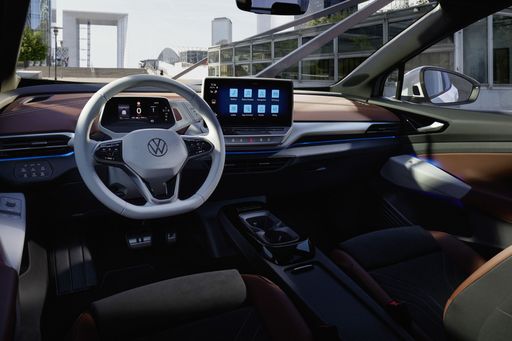 @ Volkswagen AG / VW Media
@ Volkswagen AG / VW Media
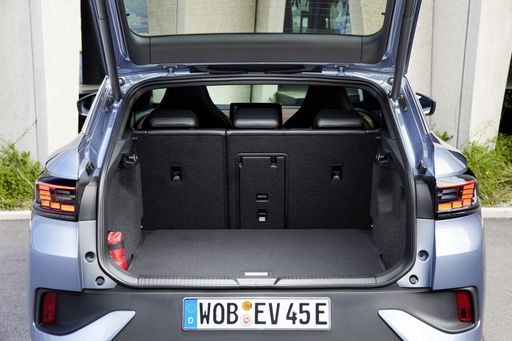 @ Volkswagen AG / VW Media
@ Volkswagen AG / VW Media
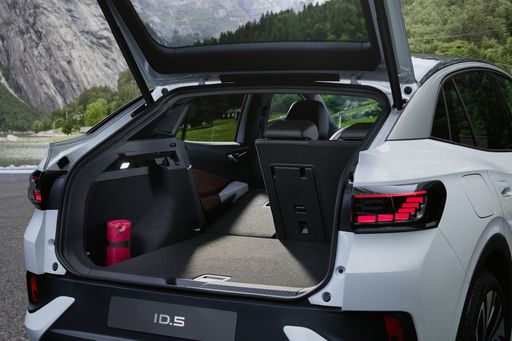 @ Volkswagen AG / VW Media
@ Volkswagen AG / VW Media
Tesla Model Y
The Tesla Model Y blends SUV practicality with sports-car poke, wrapping a roomy, minimalist cabin and handy hatch into a slick, aerodynamic package that feels more Silicon Valley gadget than garage ornament. It’s an ideal pick for buyers who want effortless electric driving, regular software improvements and access to Tesla’s convenient charging network, though style-conscious shoppers should know it’s more about tech and efficiency than classic luxury.
details @ Tesla, Inc.
@ Tesla, Inc.
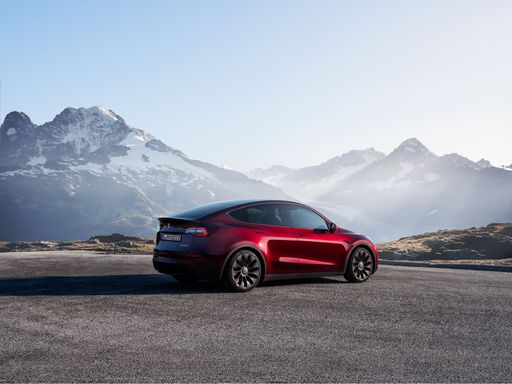 @ Tesla, Inc.
@ Tesla, Inc.
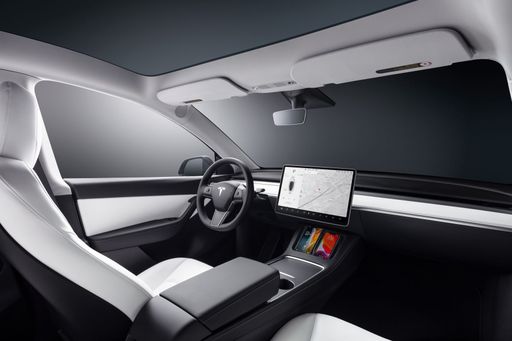 @ Tesla, Inc.
@ Tesla, Inc.
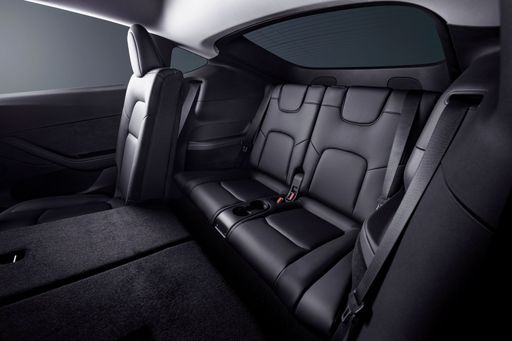 @ Tesla, Inc.
@ Tesla, Inc.
 @ Volkswagen AG / VW Media
@ Volkswagen AG / VW Media
|
 @ Tesla, Inc.
@ Tesla, Inc.
|
|
|
|
Costs and Consumption |
|
|---|---|
|
Price
36800 - 48400 £
|
Price
34300 - 53100 £
|
|
Consumption L/100km
-
|
Consumption L/100km
-
|
|
Consumption kWh/100km
15.7 - 16.6 kWh
|
Consumption kWh/100km
13.1 - 16.2 kWh
|
|
Electric Range
363 - 559 km
|
Electric Range
534 - 622 km
|
|
Battery Capacity
52 - 79 kWh
|
Battery Capacity
64.5 - 85 kWh
|
|
co2
0 g/km
|
co2
0 g/km
|
|
Fuel tank capacity
-
|
Fuel tank capacity
-
|
Dimensions and Body |
|
|---|---|
|
Body Type
SUV
|
Body Type
SUV
|
|
Seats
5
|
Seats
5
|
|
Doors
5
|
Doors
5
|
|
Curb weight
1963 - 2233 kg
|
Curb weight
1976 - 2108 kg
|
|
Trunk capacity
549 L
|
Trunk capacity
822 L
|
|
Length
4582 - 4599 mm
|
Length
4790 - 4797 mm
|
|
Width
1852 mm
|
Width
1921 mm
|
|
Height
1601 - 1618 mm
|
Height
1611 - 1624 mm
|
|
Max trunk capacity
1561 L
|
Max trunk capacity
2022 - 2138 L
|
|
Payload
517 - 549 kg
|
Payload
440 - 472 kg
|
Engine and Performance |
|
|---|---|
|
Engine Type
Electric
|
Engine Type
Electric
|
|
Transmission
Automatic
|
Transmission
Automatic
|
|
Transmission Detail
Reduction Gearbox
|
Transmission Detail
Reduction Gearbox
|
|
Drive Type
Rear-Wheel Drive, All-Wheel Drive
|
Drive Type
All-Wheel Drive, Rear-Wheel Drive
|
|
Power HP
170 - 340 HP
|
Power HP
299 - 627 HP
|
|
Acceleration 0-100km/h
5.4 - 8.9 s
|
Acceleration 0-100km/h
3.5 - 7.2 s
|
|
Max Speed
160 - 180 km/h
|
Max Speed
201 - 250 km/h
|
|
Torque
310 - 679 Nm
|
Torque
420 - 493 Nm
|
|
Number of Cylinders
-
|
Number of Cylinders
-
|
|
Power kW
125 - 250 kW
|
Power kW
220 - 461 kW
|
|
Engine capacity
-
|
Engine capacity
-
|
General |
|
|---|---|
|
Model Year
2024 - 2025
|
Model Year
2025
|
|
CO2 Efficiency Class
A
|
CO2 Efficiency Class
A
|
|
Brand
VW
|
Brand
Tesla
|
What drive types are available for the VW ID.5?
The VW ID.5 is available as Rear-Wheel Drive or All-Wheel Drive.
The prices and data displayed are estimates based on German list prices and may vary by country. This information is not legally binding.
